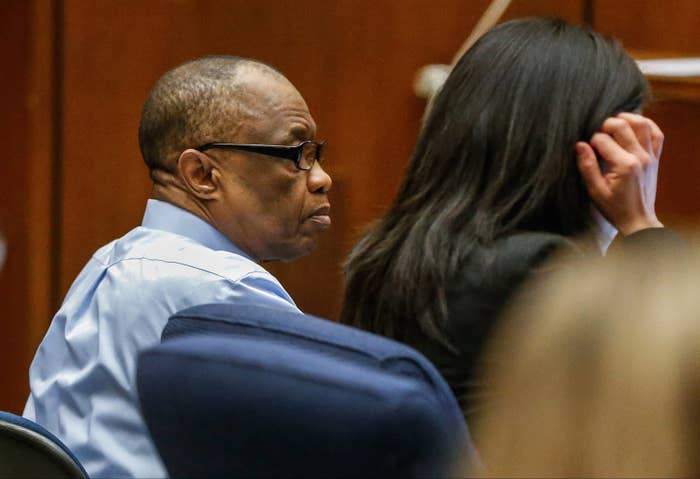
LOS ANGELES — Outside the courtroom where the alleged serial killer known for years only as the Grim Sleeper was to begin his trial, the family of one his alleged victims, 18-year-old Alicia Alexander, hugged retired police Detective Dennis Kilcoyne.
"We finally made it to this day," one of them said Tuesday.
It has been six years since Lonnie Franklin Jr. was arrested on suspicion of killing 10 women and teenagers, and attempting to kill another. The killings spanned three decades, with a 14-year pause in the middle — a lapse that inspired the Grim Sleeper nickname.
Franklin’s trial began in a downtown Los Angeles courtroom packed with generations of the family of his alleged victims. Prosecutors, who are seeking the death penalty, say DNA and firearms evidence link him to 11 crimes. On Tuesday, his attorneys declined to make an opening statement for his defense.
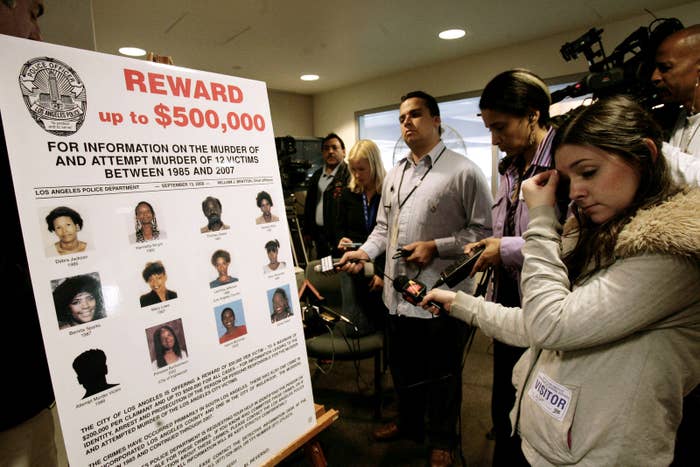
For decades, a faceless killer moved undetected through the streets of South L.A. Amid the crack cocaine epidemic of the 1980s, he lured young, black women, many of whom were working as prostitutes to feed their addiction. The killer would then shoot them in the chest at close range, sexually assault them, then dump their partially dressed or naked bodies in alleys amid garbage and abandoned mattresses.
It was a period when South L.A. was devastated by crack, Deputy District Attorney Beth Silverman reminded the jury on Tuesday. Franklin took advantage of especially vulnerable women grappling with addiction and poverty.
“He knew they weren’t worried about their safety,” she said. “This was the perfect opportunity for someone to prey on women.”
The body of Debra Jackson, 29, was found Aug. 10, 1985. Then 34-year-old Henrietta Wright was discovered almost exactly a year later. Barbara Ware, 23, was found April 16, 1987; Mary Lowe, 26, on Nov. 1, 1987; Lachrica Jefferson, 22, on Jan. 30, 1988; and Alicia Alexander, 18, on Sept. 11, 1988.
Silverman showed photos of the trash-strewn crime scenes where the women were dumped. Family members bowed their heads and wept as autopsy photos showed naked bodies, many marked with the burns and small, round entry wound that would have been caused by a .25-caliber handgun fired at very close range.
The killings appeared to form a series, but detectives were initially left with few leads, Silverman said.
“There were no eyewitnesses to any of these crimes, and because of that, these murders went unsolved,” she said.
But on Nov. 20, 1988, one of the women survived. Enietra Washingon, 30, was walking to a friend’s house for a party when she was stopped by a man in a Ford Pinto. He offered her a ride, and after initially refusing, she accepted. She’d later tell the L.A. Weekly he looked neat — geeky even — and didn’t seem like a threat.
Then, out of nowhere, he started to argue with her, pulled out a gun, and shot her in the chest. Doctors would later pull out a .25-caliber bullet matching those that had killed the other women, Silverman said.
Washington was eventually able to tell police that she struggled to remain conscious during the attack. She was sexually assaulted, and recalled how before the man pushed her out of the car, he took a Polaroid photo.

Thirty years later, that Polaroid would be found in Franklin's home, Silverman said. But for decades, Washington was left with no answers about the attack or the other victims involved. It seemed the Grim Sleeper had gone to sleep.
It was until spring 2007 that Kilcoyne, a detective in the LAPD’s robbery homicide division, got a major break. Lab results had finally come back for a naked woman fatally shot and hidden in a dumpster. DNA linked the death of 25-year-old Janecia Peters to two other cases: The killings of 35-year-old Valerie McCorvey in 2003 and 15-year-old Princess Berthomieux in 2002. Both were strangled and their bodies dumped.
The DNA profile revealed there was one unique suspect, prompting Kilcoyne and the head of the department’s cold case division to go to their supervisor.
“We discussed we had a serious problem on our hands,” he said. “We’ve got somebody killing young ladies in South Los Angeles.”
By the end of the day, they were in front of then-LAPD Chief Bill Bratton, who authorized a task force to investigate the three killings, and to analyze older cases that might also be connected.
“Almost immediately, there’s a series from the 1980s that jumps out at us,” Kilcoyne said.
The task force began the methodical work of applying modern DNA tests to basic forensic evidence that had been kept for decades. Five of the cases from the 1980s included DNA from the same suspect identified in the three case in the 2000. In the 1980s cases where DNA was not available, analysis of the bullets pulled from each victim’s chest showed they came from the same gun, Silverman said.
“Every single one of them was connected to the same serial killer by DNA or forensics evidence, or both,” she said.
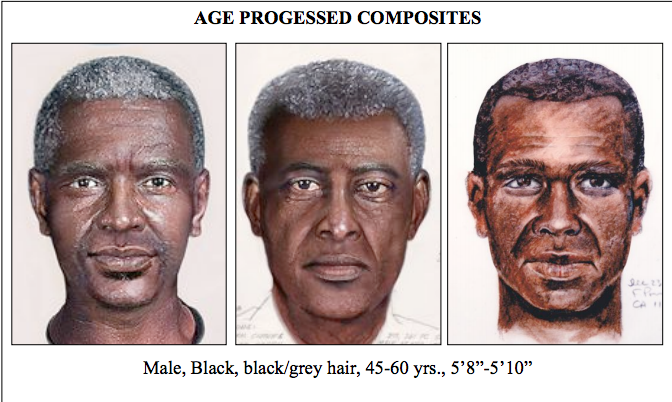
But the identity of the killer remained unknown. The DNA profile didn’t match that of any databases kept by state or federal authorities. So in 2009, detectives appealed to the public for help. One year later, a partial DNA match was finally made: A convicted felon in California appeared to be a close relative of the mystery killer.
Through the partial match, detectives identified Lonnie Franklin, Jr. as a suspect. The then-57-year-old was a longtime South L.A. resident, had worked as a mechanic for the LAPD in the 1980s, and later for the city’s sanitation department driving a garbage truck.
Franklin was put under surveillance, and detectives followed as he spent his nights driving along streets known for prostitution. On July 5, 2010, he was followed to John’s Incredible Pizza in Buena Park, California, where he ate lunch.
An LAPD detective who had explained to the restaurant owner he was working on an investigation then posed as a bus boy and collected partially eaten pizza crust, napkin, plate, glass, and fork from Franklin’s table.
DNA analysis of the items finally gave detectives a solid match, Silverman said.
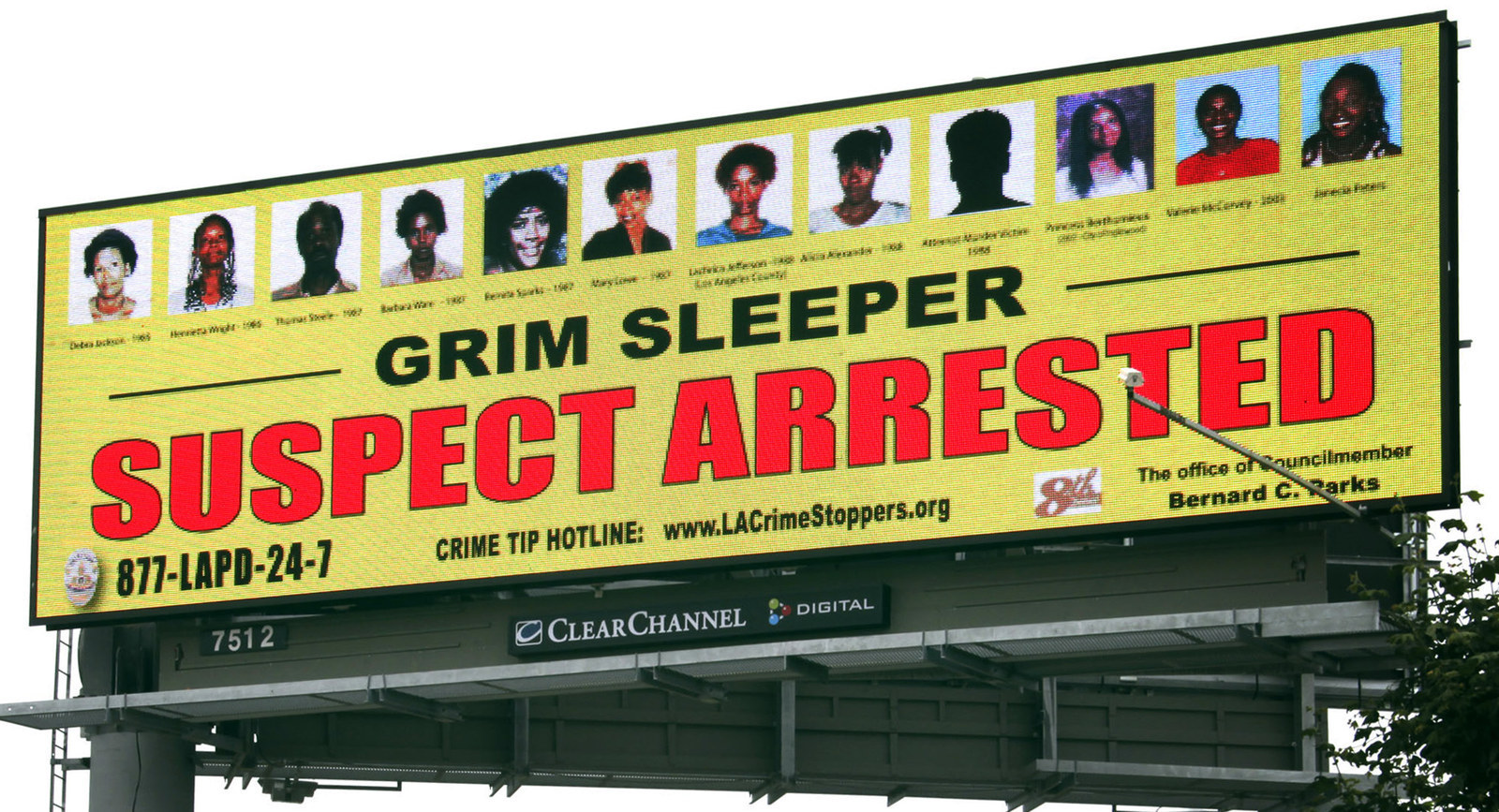
When confronted with photos of the 11 women after his arrest, Silverman said Franklin told investigators he had never seen them before. He also had no explanation for how his DNA came to be present, she added.
A .25-caliber handgun found in his home was proven to be the weapon that killed Janecia Peters, Silverman said. In addition to the Polaroid showing Washington, investigators also found a photo of Peters and other young women.
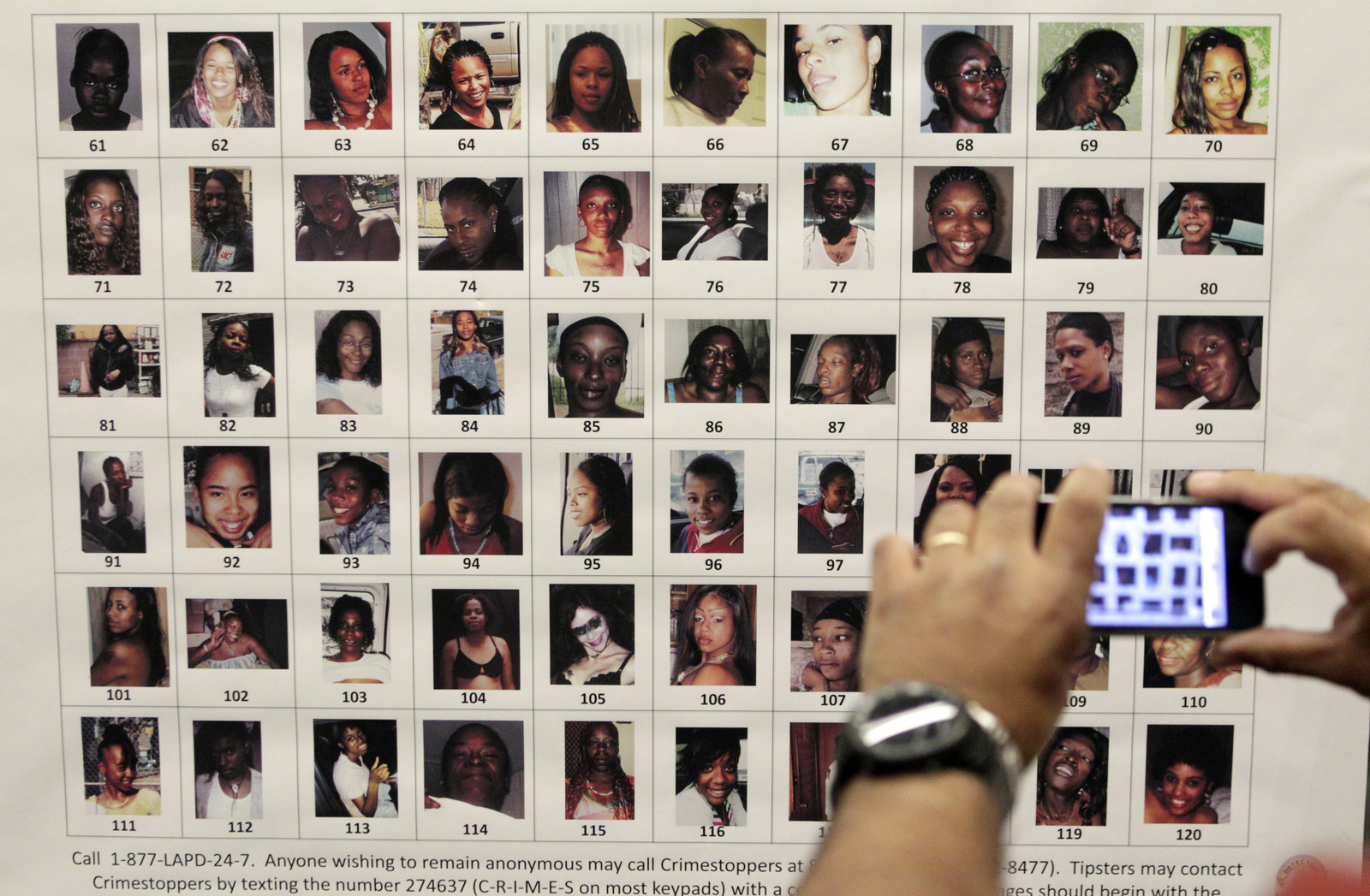
It's not known if the other women in the photos are also victims of homicide or other crimes. In the trial that kicked off Tuesday, only evidence relating to the 11 identified women will be presented.
The trial is expected to last several months.
